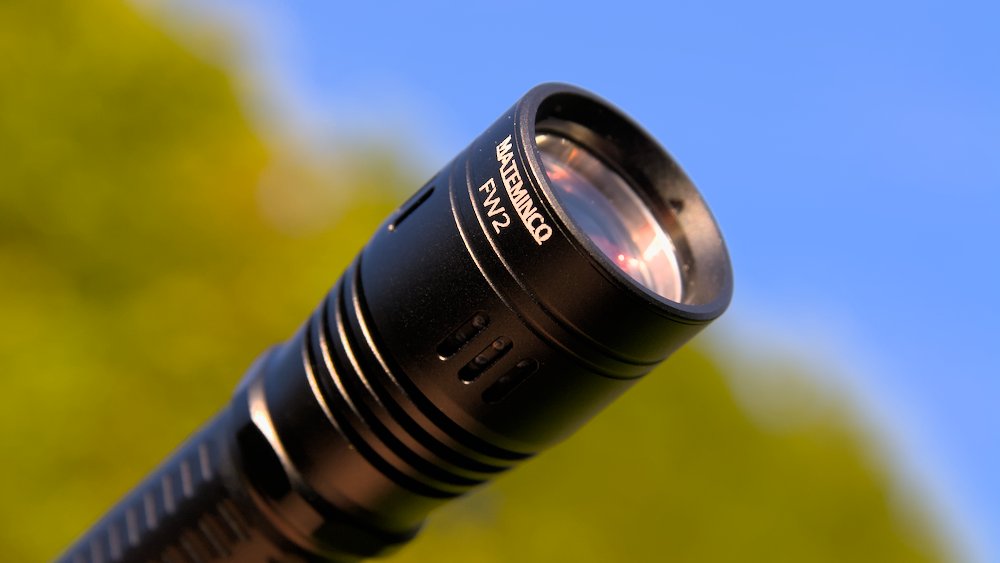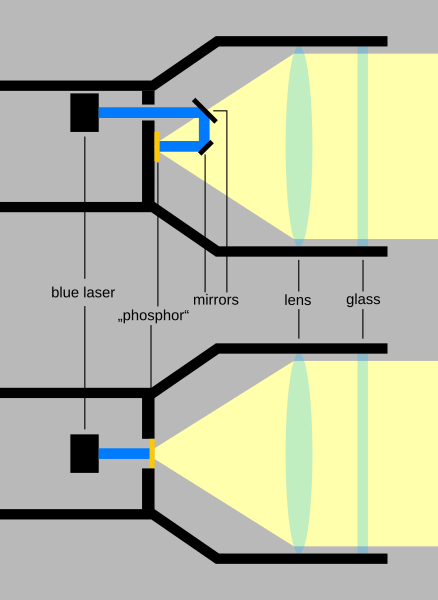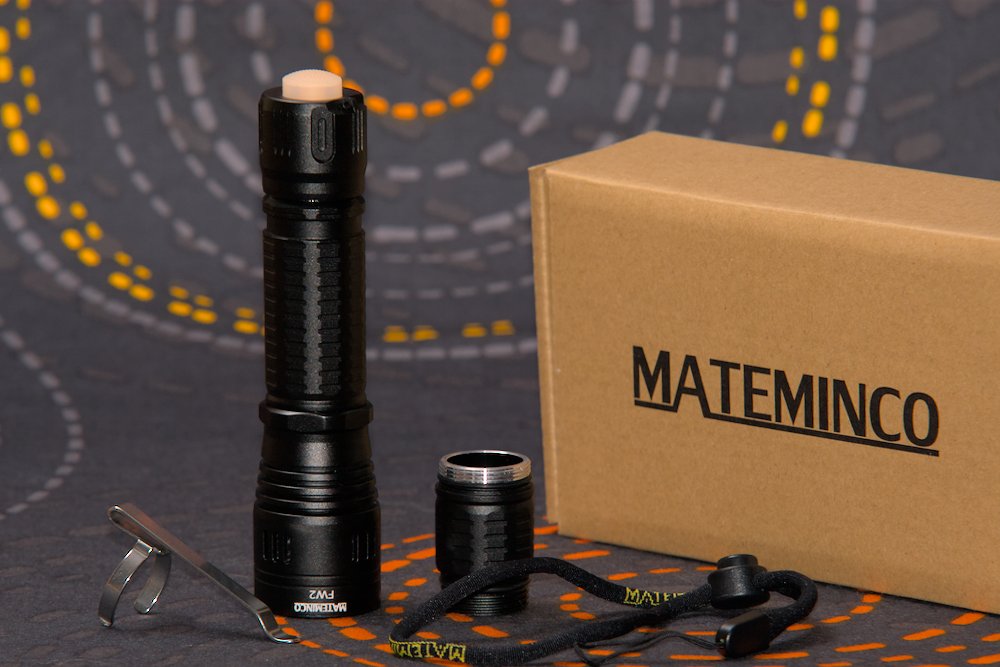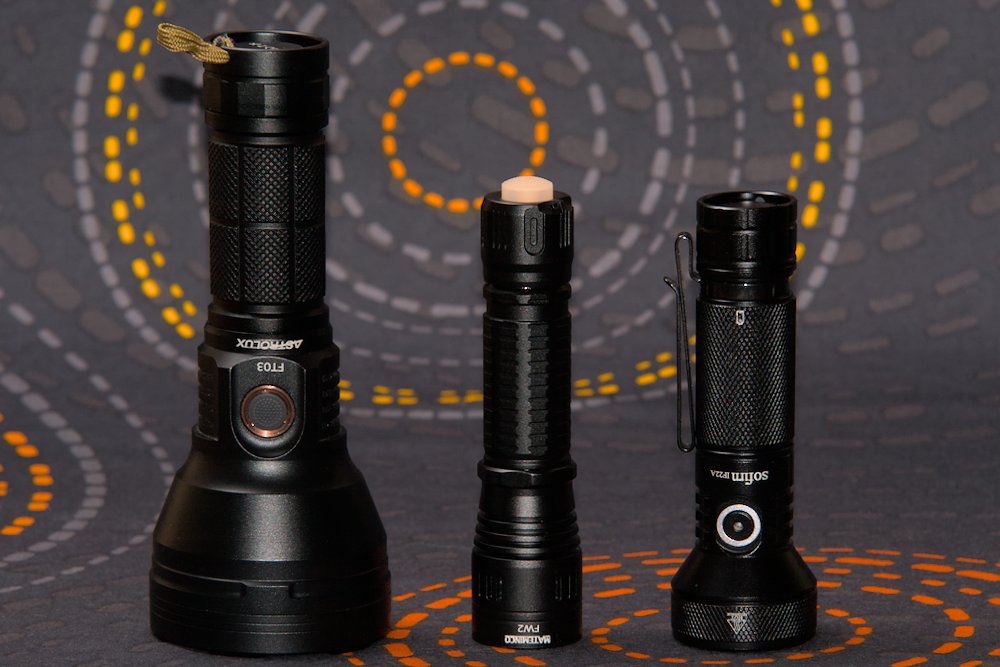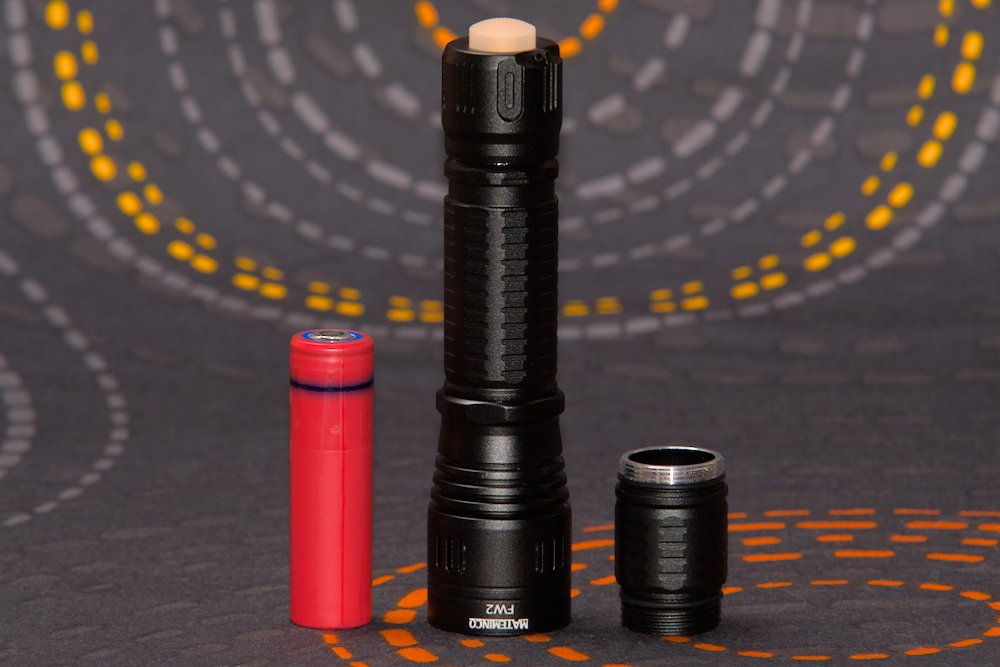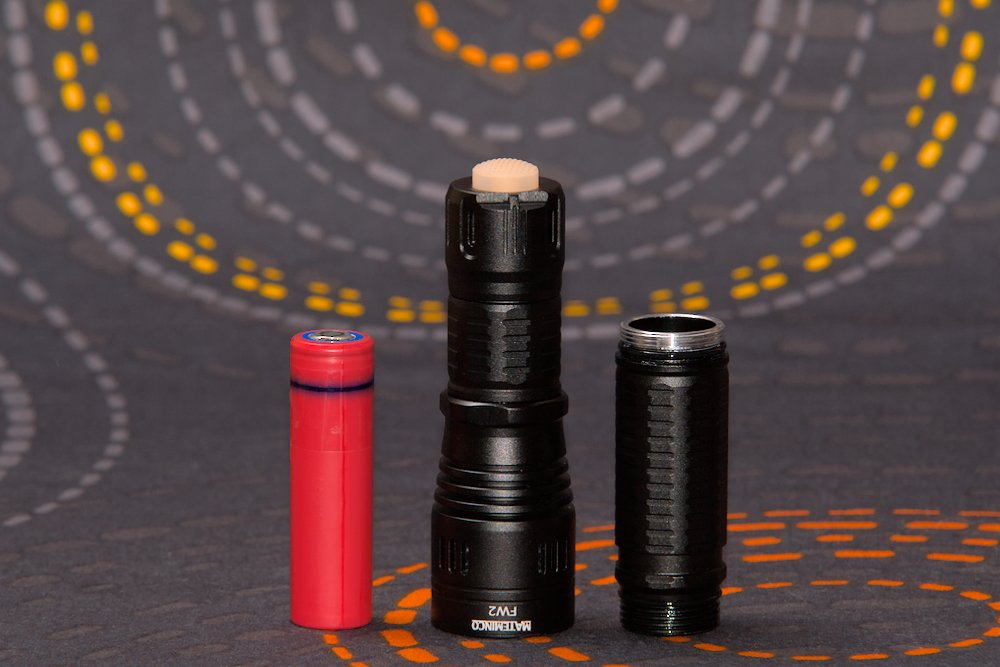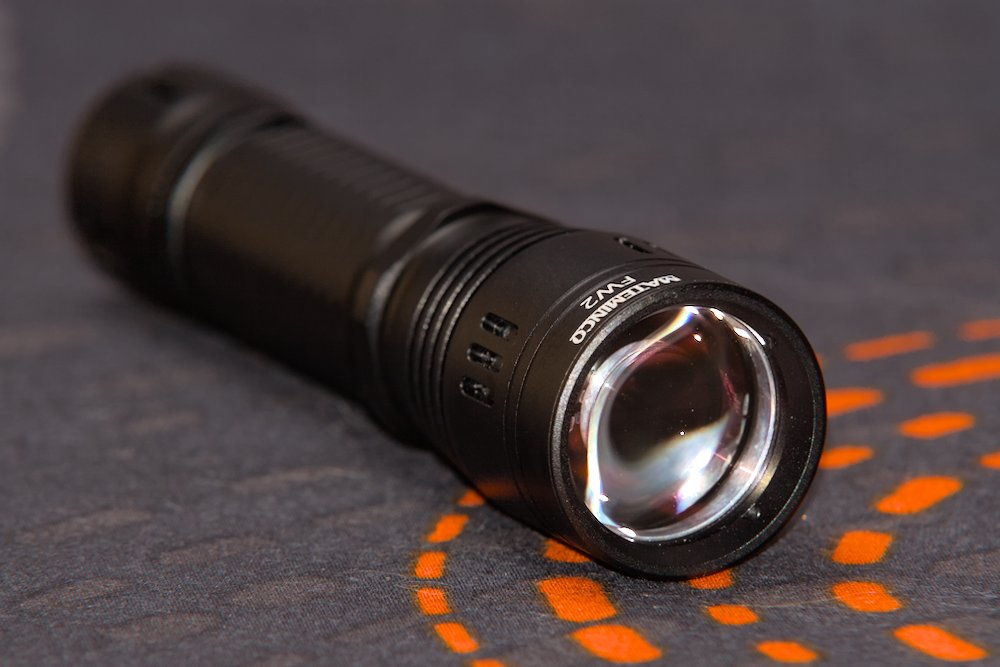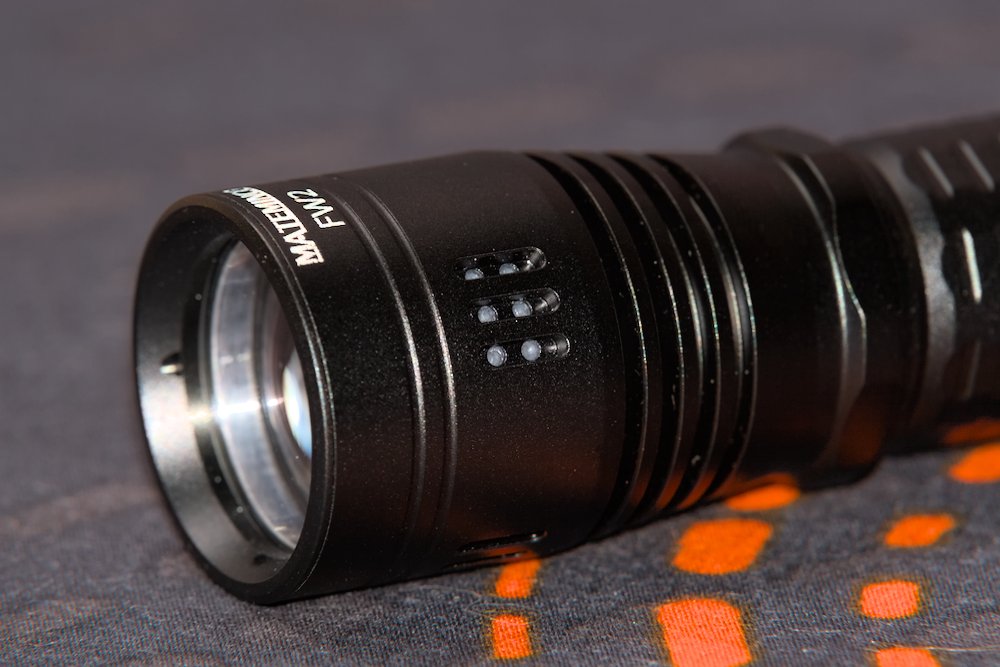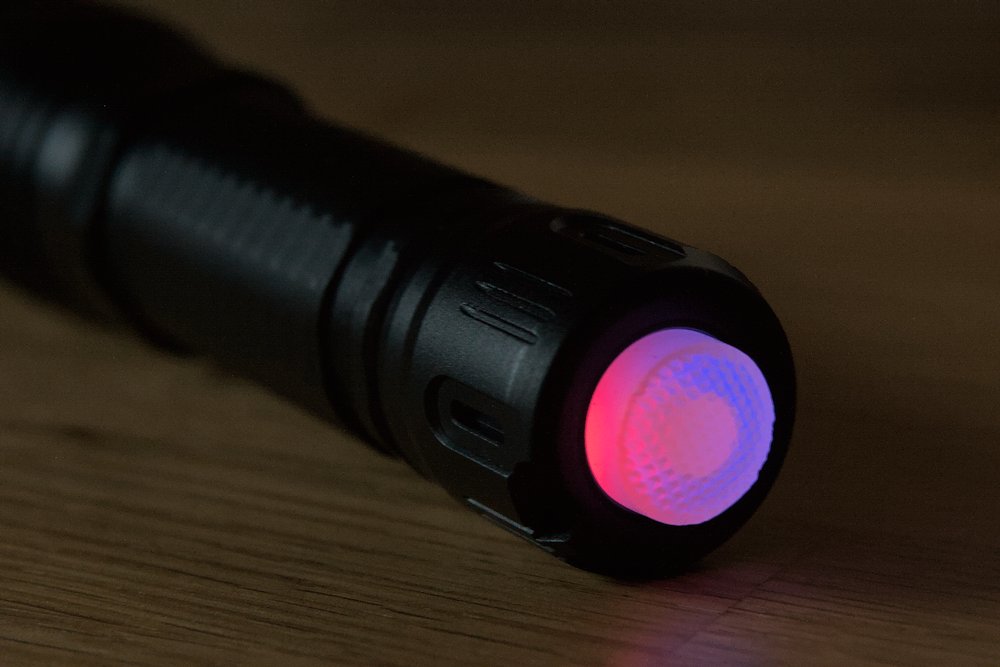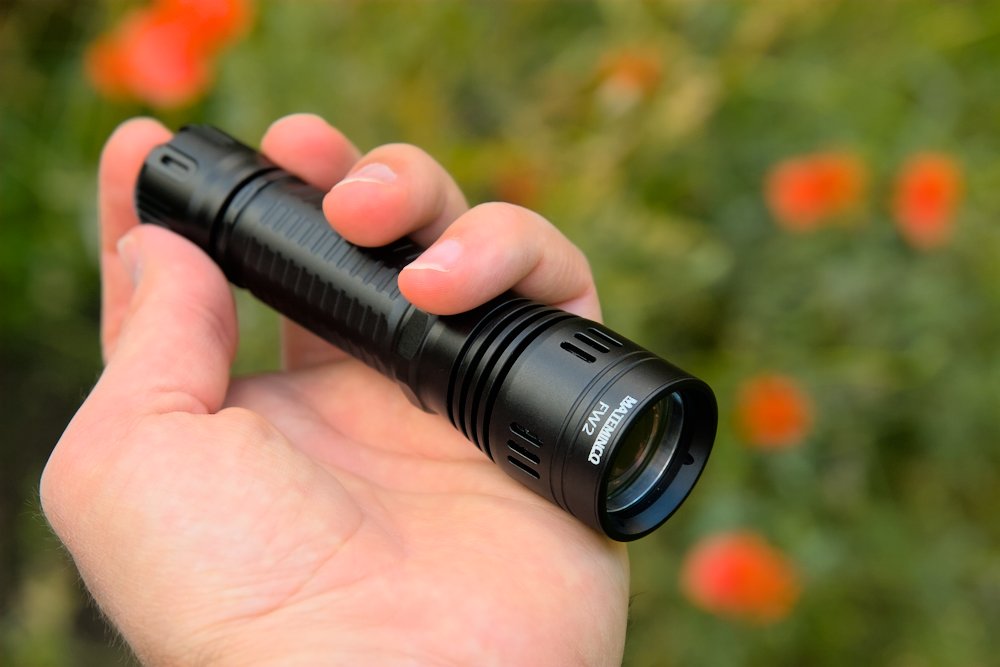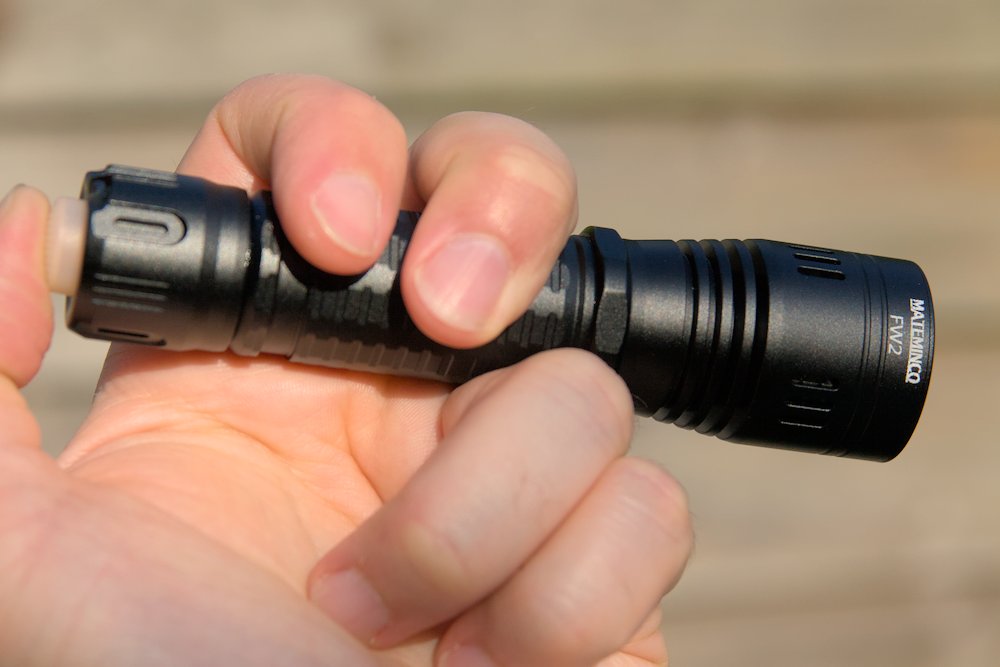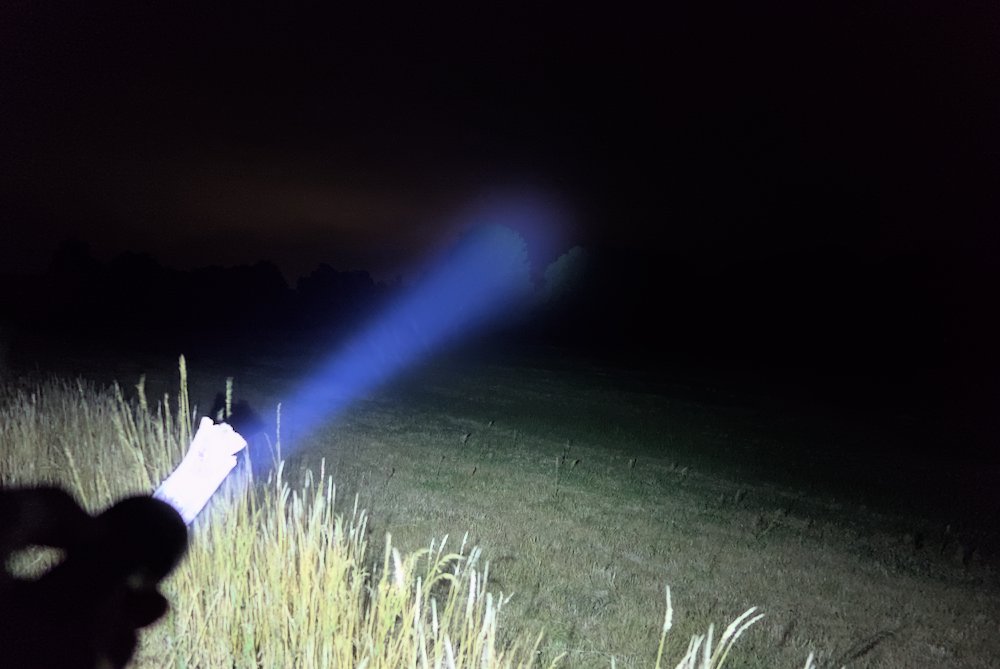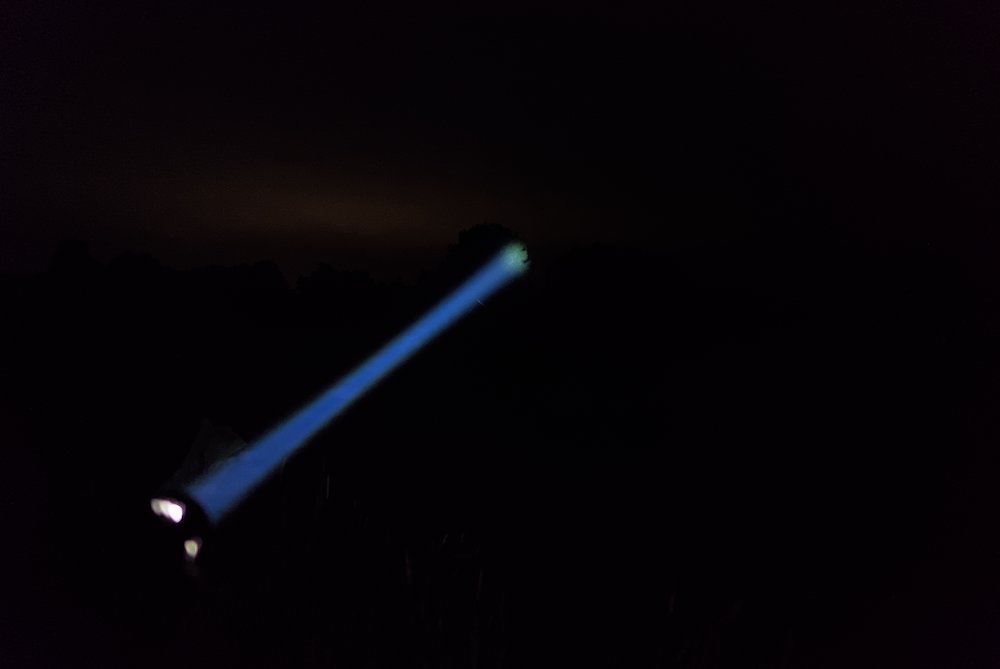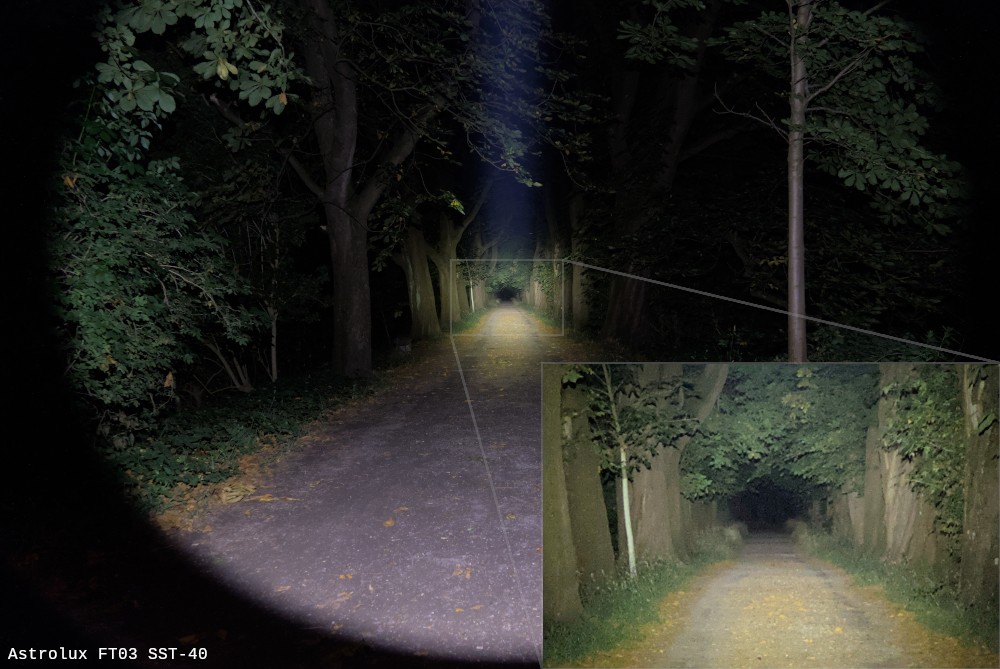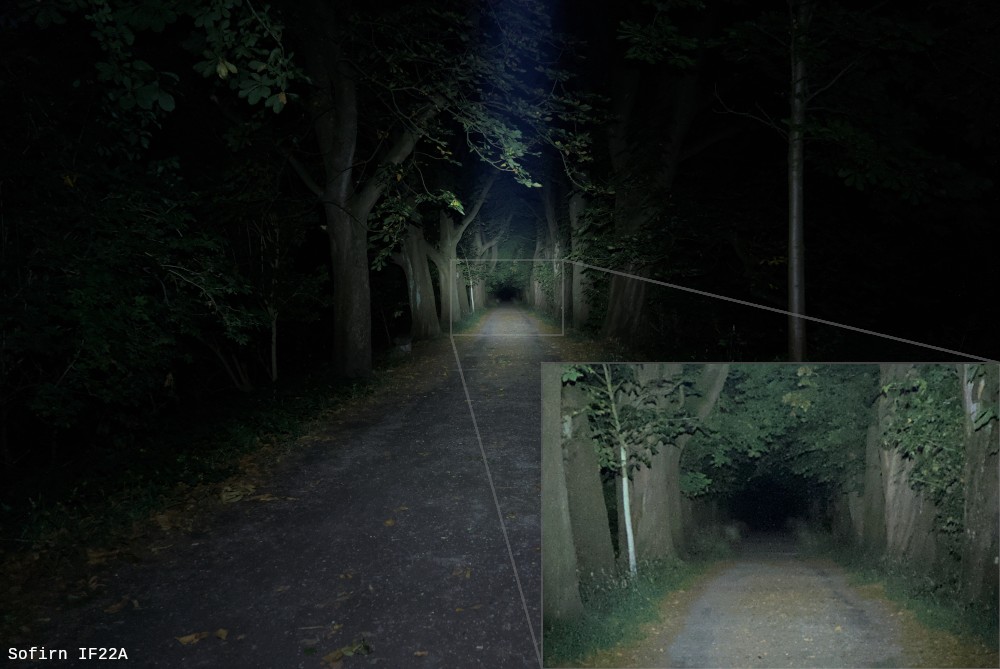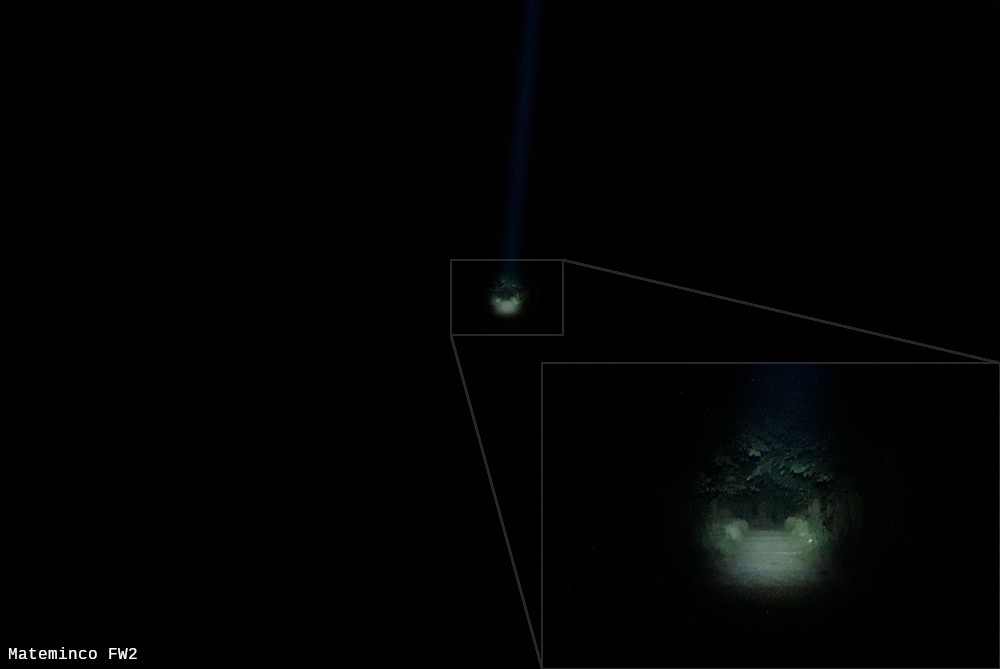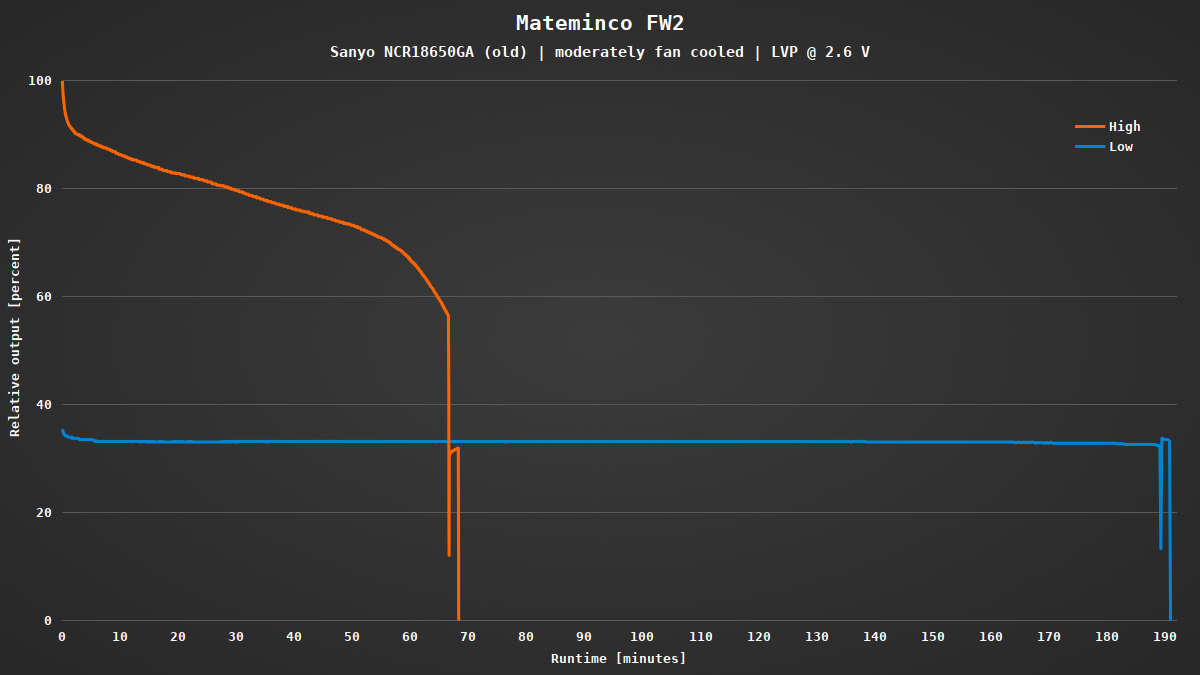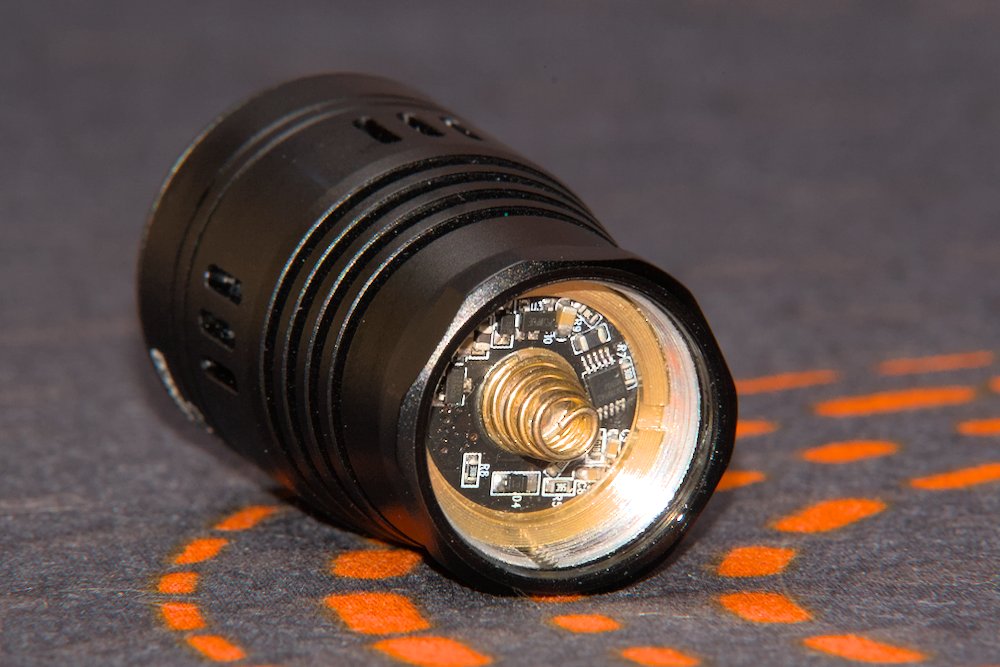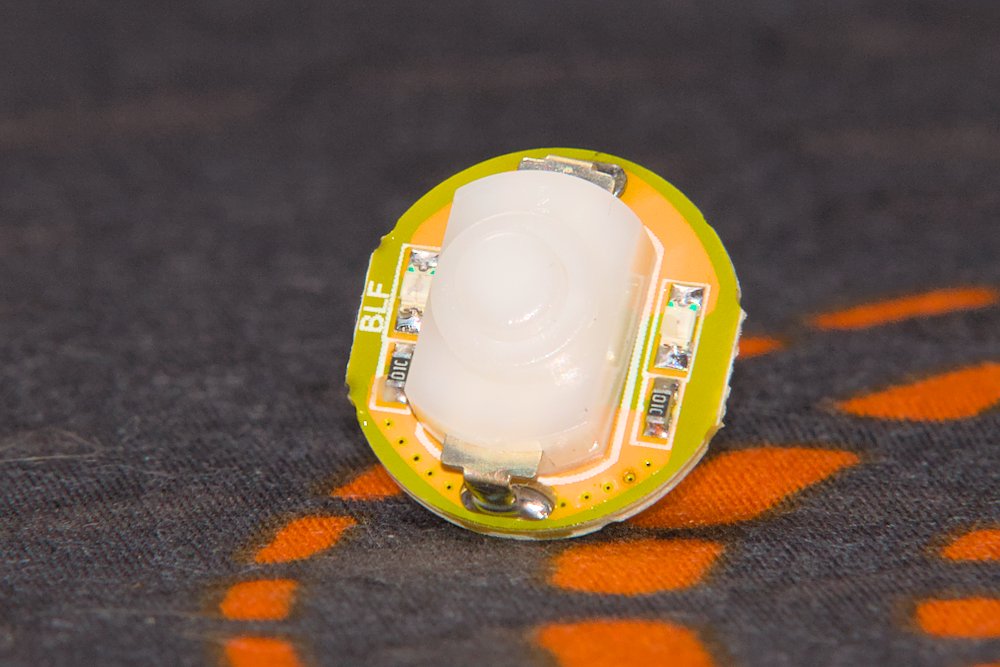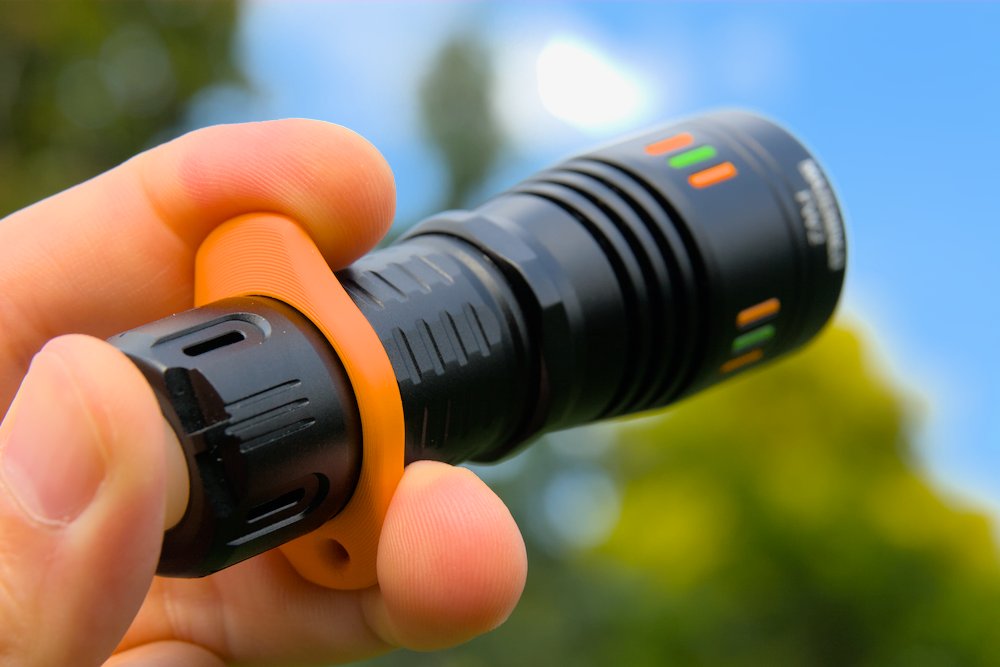Today I’d like to show you the Mateminco FW2 (also available as “Astrolux WP4” from Banggood), a small LEP for your pocket.
This review is sponsored by FlashlightBrand. They gave me a good discount for this light to make this review possible. The relatively new online shop located in China sells flashlights from various big brands like Fenix, Nitecore, Lumintop, Mateminco or Olight. Shipping to Germany was without any issues. Tax was handled by the seller and after two weeks I received the package.
If you understand German, you can find this review in a slightly longer version on my website.
Lep?
Do I have to explain in this forum what a LEP is? LEP means “laser excited phosphor” and describes exactly what it is: A blue laser excites a phosphor layer. Better cooling, smaller spot, more throw.
Currently there are two different LEP implementations: Either the laser hits the phosphor layer from the front via mirrors or from the back. The Mateminco FW2 is of the second variant.
Supplied parts and hardware
Included are a clip, a lanyard and two replacement o-rings. In addition to the 18650 battery tube there’s also a 18350 tube included! The manual is in Chinese and English and very brief. It lists the specification and has a small table of the (very simple) UI.
The flashlight is amazingly small: 32 mm diameter and 128 or 98 mm long (depending on the battery tube). It weights 105 or 90 g.
Here is a comparison with the Astrolux FT03 and the Sofirn IF22A. The FW2 has the longest throw!
And here is the comparison between the two battery tubes. IMHO both variants are well proportioned. The threads are a bit loose, but could be fixed with a thicker o-ring.
The small spot on the phosphor layer is focused by a lens which is covered by a protective glass.
There are 12 slots for 1.5 * 6 mm glow sticks in the head. Each of them is backlit (sealed) to charge the glow stick if you don’t use tritium vials. You can also get a “glow ring” which is placed between lens and glass and illuminates the inside of the flashlight with a faint glow.
The tailcap has four slots as well, but not backlit. There’s also a hole for a lanyard (sharp edges, better use a keyring). If the flashlight is off, the switch is illuminated in red and blue (not configurable).
Overall build quality is excellent. All edges are properly rounded (except the lanyard hole). The black anodization is slightly slippy and the texturing doesn’t help much.
User interface and handling
The reverse clicky switched the light on and off. A short press toggles between low and high modes. A double tap enters strobe (more rapid flashing at 6 Hz).
There’s no real mode memory, but it takes about 15 seconds for the flashlight to forget the previous level. Shorter interval are interpreted as a short press and will advance the mode.
Beam
Now the interesting part: Fun or function? The FW2 is more a pocket lightsaber than a flashlight. The beam is very focused and without spill (which helps preventing blinding yourself – just think about driving with high beams during fog).
On the other hand this pencil beam makes it hard to hit your target and track it, especially without shaking. Unusable for short distances. Works quite well at ten meters to read house numbers. Farther away and you wish to have binoculars. ![]() Good contrast will help, while vegetation and animals all will appear slightly “gray in gray”.
Good contrast will help, while vegetation and animals all will appear slightly “gray in gray”.
Mateminco describes the LEP module as an “Osram CT1”. I couldn’t find any datasheet or other information, but Osram is known for using LEP modules in car lights. Officially it has 310 lm with an amazing throw of 425000 cd (or 1303 m per ANSI FL1). Don’t expect high CRI or warmwhite, but it is quite usable.
Driver and runtime
With a 18650 battery you’ll get a constant output for more than three hours! In high the output drops slightly, but is still amazing. With 18350 batteries the runtime will be shorter, but still well regulated on low. I prefer the shorter version because I won’t use it constantly on for hours and because it is so much smaller with 18350.
Power consumption is low, but expected for only 310 lm. At 4 V it is 3.0 A on high and 0.9 A at low (but rising to keep the power constant).
There’s no PWM, but slight ripple at 240 kHz. That indicates there is a switching regulator involved. At 2.8 V the flashlight flashes to indicate a low battery and at 2.6 it switches off.
In my tests the head reached about 45 °C. The manual states that the output will be reduced when it gets too hot.
The switch is held in place with a retaining ring. There are two LEDs, each with a 10 kΩ resistor. The double spring seems unnecessary for the low currents. Also the PCB mentions “BLF”. ![]()
Modding
Previously I have mentioned that the light remembers the last mode for 15 seconds. This seems to be caused by the current through the switch backlight. Without it the mode is reset after only two seconds.
Instead of removing the LEDs or resistors or cutting the traces, I simply swapped in a 16 mm switch PCB from Convoy which fits perfectly.
I’ve designed and printed a tactical ring for the Mateminco FW2, which makes it easier to use with three fingers.
For the slots I have used PLA filament from my 3D printer. They are just press-fit.
Conclusion
Using the flashlight is pure joy! Practical use depends on your situation. Reading house numbers or inspecting pipes? Or mount it to binoculars? The Mateminco FW2 is a well made flashlight/LEP and starts to become quite affordable.
You can get it from FlashlightBrand in black or silver, optional with a glow ring.
